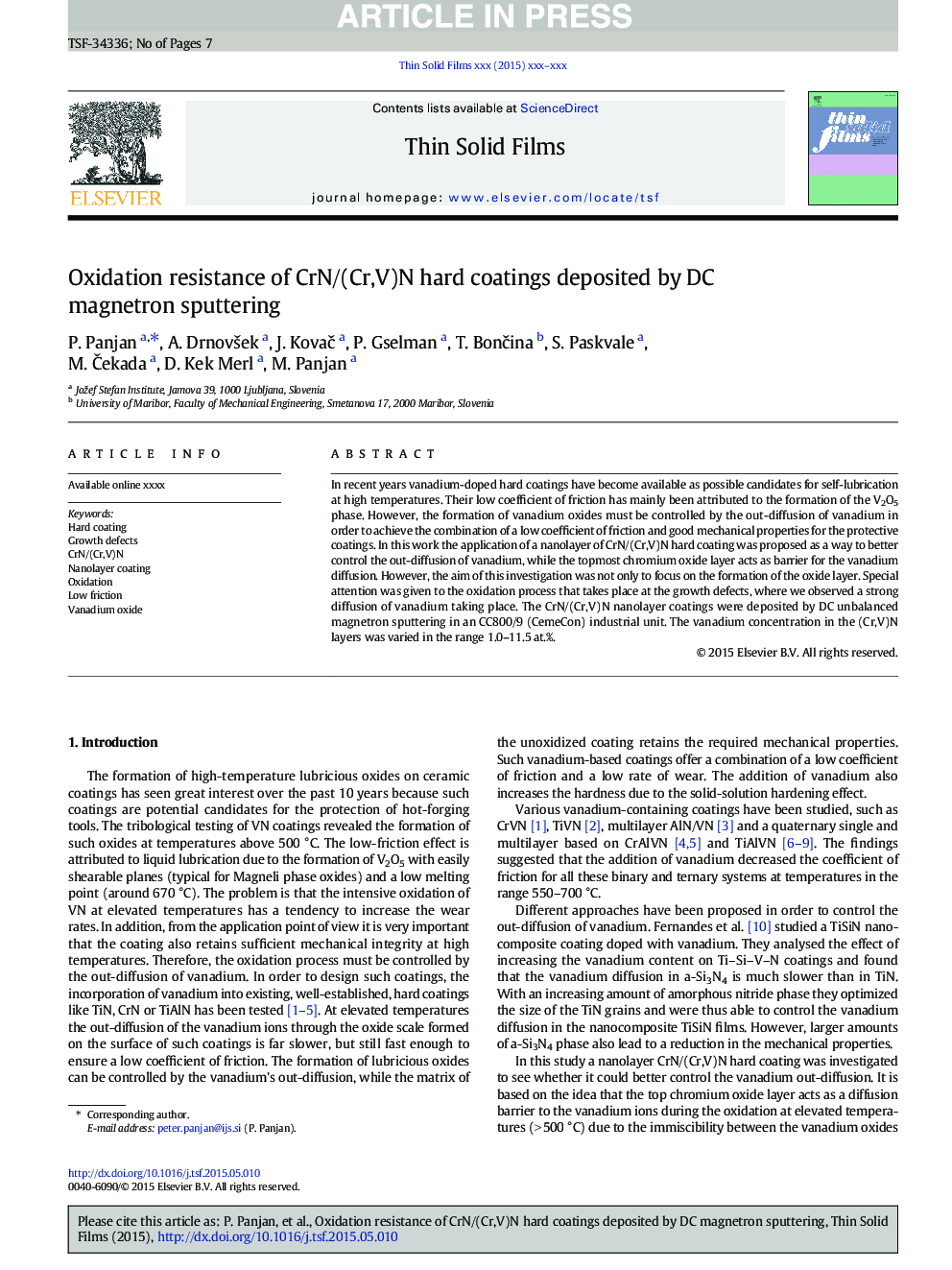| Article ID | Journal | Published Year | Pages | File Type |
|---|---|---|---|---|
| 10669632 | Thin Solid Films | 2015 | 7 Pages |
Abstract
In recent years vanadium-doped hard coatings have become available as possible candidates for self-lubrication at high temperatures. Their low coefficient of friction has mainly been attributed to the formation of the V2O5 phase. However, the formation of vanadium oxides must be controlled by the out-diffusion of vanadium in order to achieve the combination of a low coefficient of friction and good mechanical properties for the protective coatings. In this work the application of a nanolayer of CrN/(Cr,V)N hard coating was proposed as a way to better control the out-diffusion of vanadium, while the topmost chromium oxide layer acts as barrier for the vanadium diffusion. However, the aim of this investigation was not only to focus on the formation of the oxide layer. Special attention was given to the oxidation process that takes place at the growth defects, where we observed a strong diffusion of vanadium taking place. The CrN/(Cr,V)N nanolayer coatings were deposited by DC unbalanced magnetron sputtering in an CC800/9 (CemeCon) industrial unit. The vanadium concentration in the (Cr,V)N layers was varied in the range 1.0-11.5Â at.%.
Related Topics
Physical Sciences and Engineering
Materials Science
Nanotechnology
Authors
P. Panjan, A. DrnovÅ¡ek, J. KovaÄ, P. Gselman, T. BonÄina, S. Paskvale, M. Äekada, D. Kek Merl, M. Panjan,
